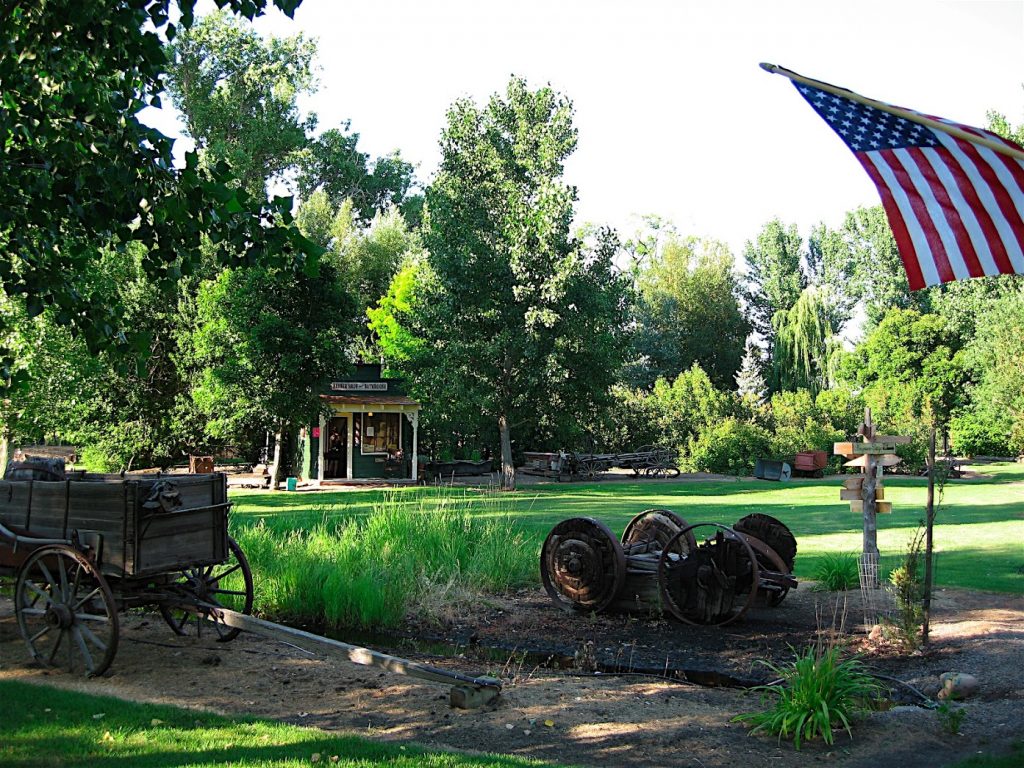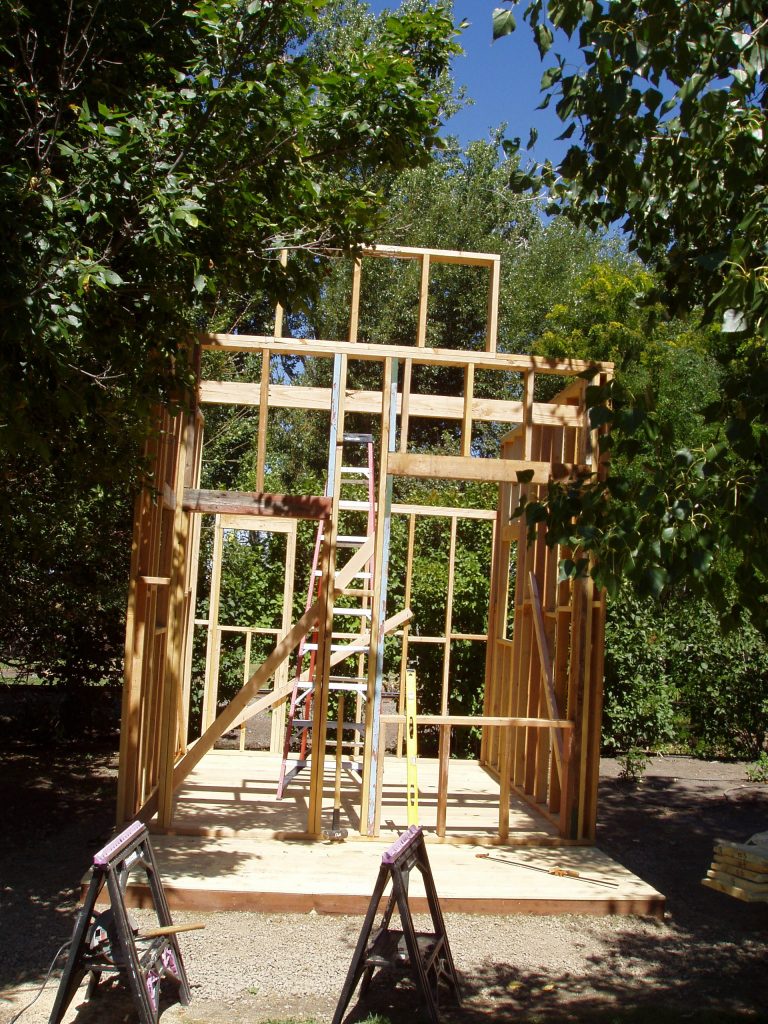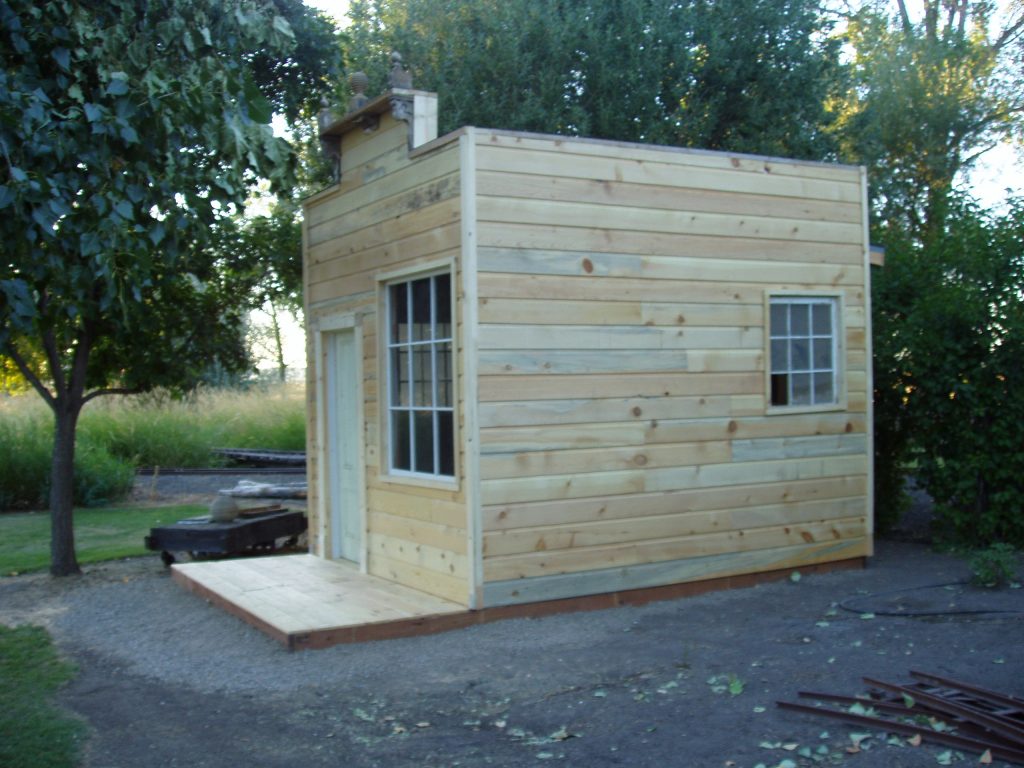BARBER SHOP & BATHHOUSE
Our Barber Shop & Bathhouse is filled with barber shop memorabilia from the late 1800s and early 1900s.

Stephen and Cheryl’s niece and nephew, Jake and Lexi, head for a tour of the Barber Shop.

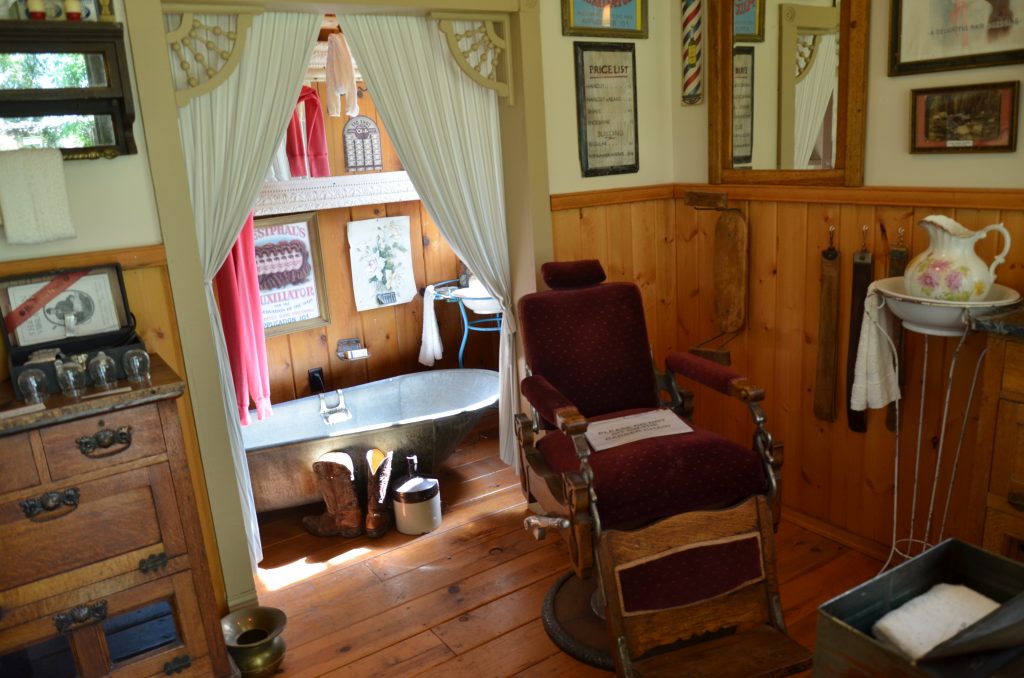


The history of the barber pole dates from the days when the barber was responsible for more than cutting hair. Shaves, tooth extraction and bloodletting were also available. The shape of the pole is said to have derived from the wooden stick that a patient squeezed to make the veins in his arm stand out more prominently for the bloodletting procedure.
The red stripes on the pole represented the blood removed from the patient, and the white stripes represented the bandages used to stem the bleeding. The twisting design of the stripes symbolized the bloody bandages hung out to dry in the front of the barber shop, which twisted and turned in the wind. Note that the early barber poles did not have a blue stripe. The shape of the bottom of the classic barber pole is similar to the shape of the container used for holding bloodletting leeches in the late 1800s.
It was not until the early part of the 1900s that barber poles came to have the now-classic rotating cylinder. Prior to 1925, a hand wound clock-like mechanism turned the striped cylinder. A single winding kept the pole rotating for up to 12 hours. By the 1930s, new poles were turned by electric motors.
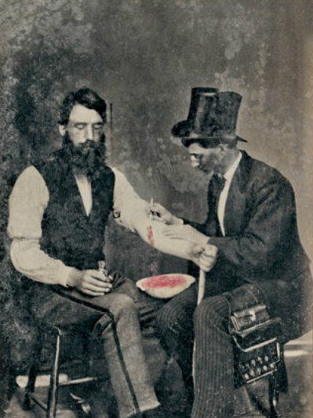

Blood was removed from the patient’s body by using tools such as a “fleam” (a surgical knife with a sharp cutting edge). Pictured above is a fleam from the Civil War era with four blades which is displayed in our barber shop. It was felt that blood in your body was created and then used up; it did not circulate, and so it could “stagnate” in the extremities. Leeches were also used to remove blood from patients. Pictured below is the “fleam”, four glass bloodletting cups, hair clippers, and a pair of ” pliers” that is actually an early day tooth extractor. Barbers also served as your local dentist.
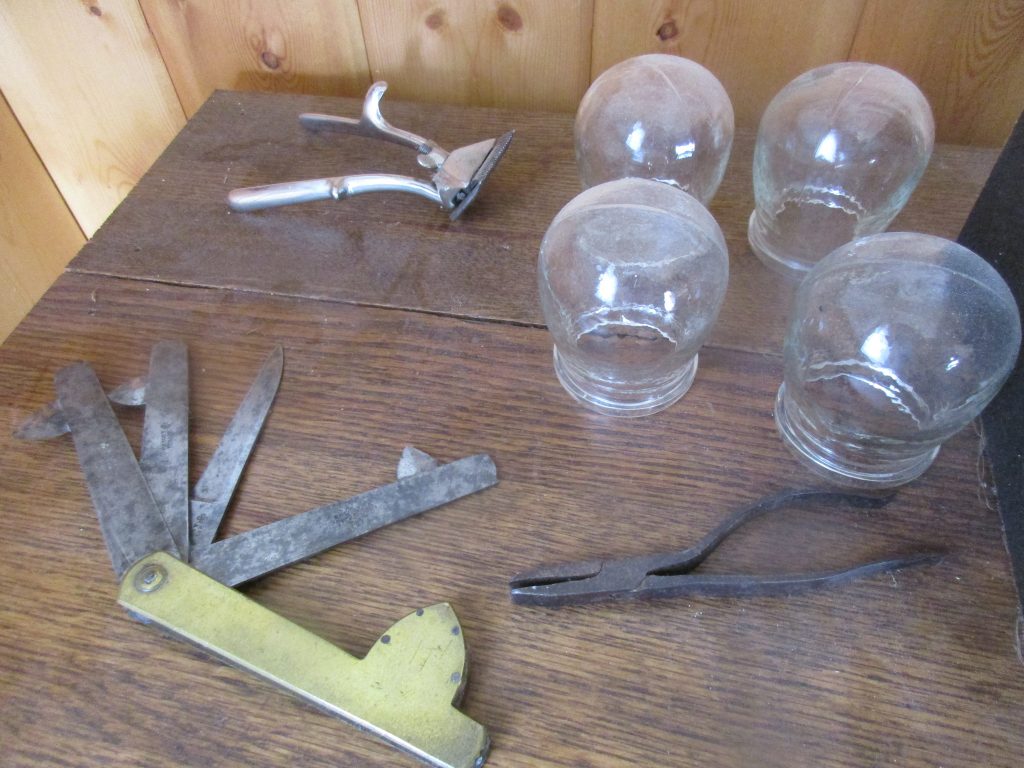

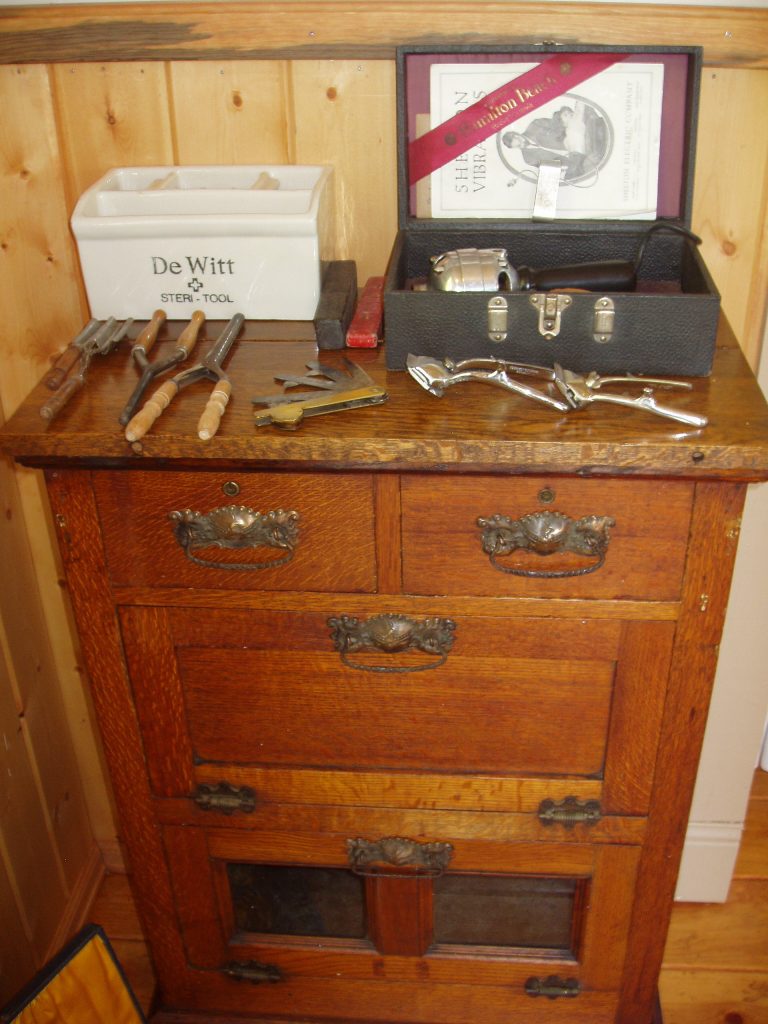
Early barber shops had shaving mug racks on the walls where patrons kept their own personalized shaving mugs. Men preferred to go to barber shops for their shaves because the style of beards in the late 1800s required precise shapes for the facial hair. The decline in barbershops can be traced to World War I when Uncle Sam provided safety razors to millions of soldiers heading to Europe. When the Doughboys returned home they were hooked on the convenience of safety razors and no longer needed to go to the barber shop to get a shave.
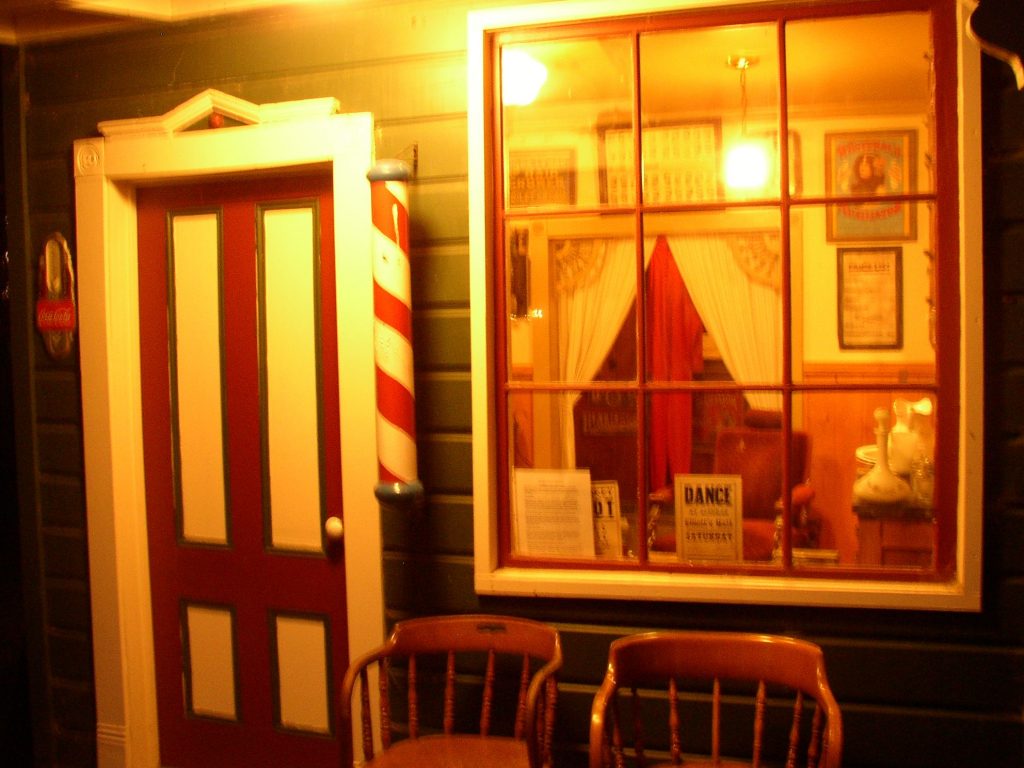
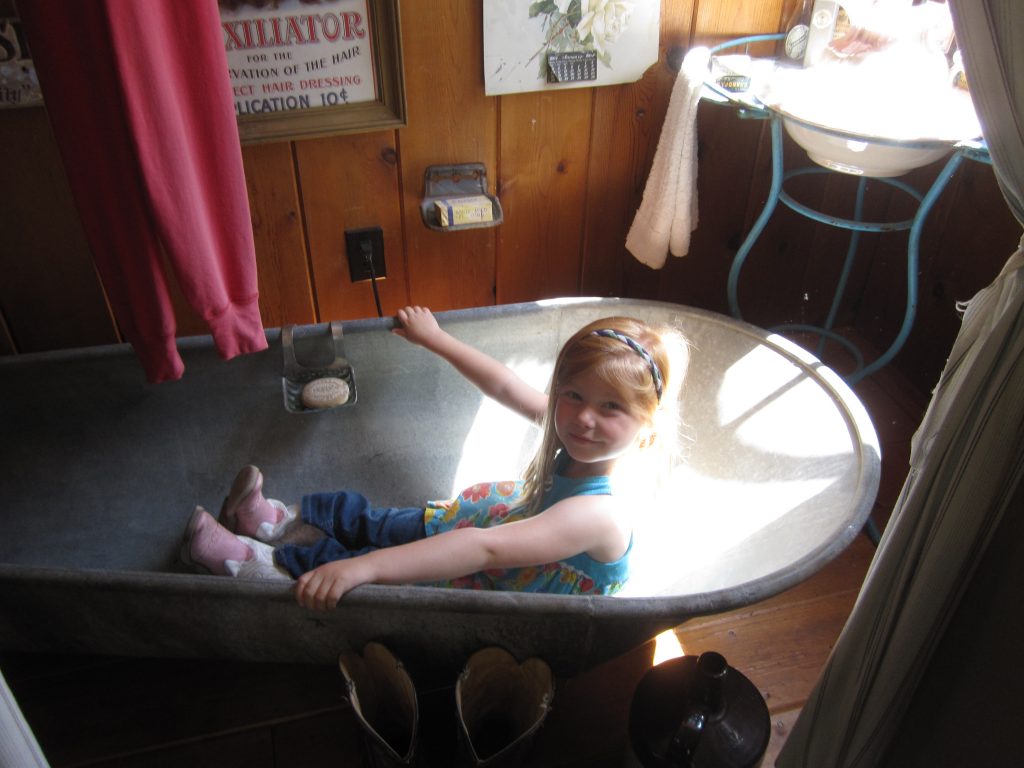
Stephen & Cheryl’s granddaughter Clare tries out the bathtub for size.
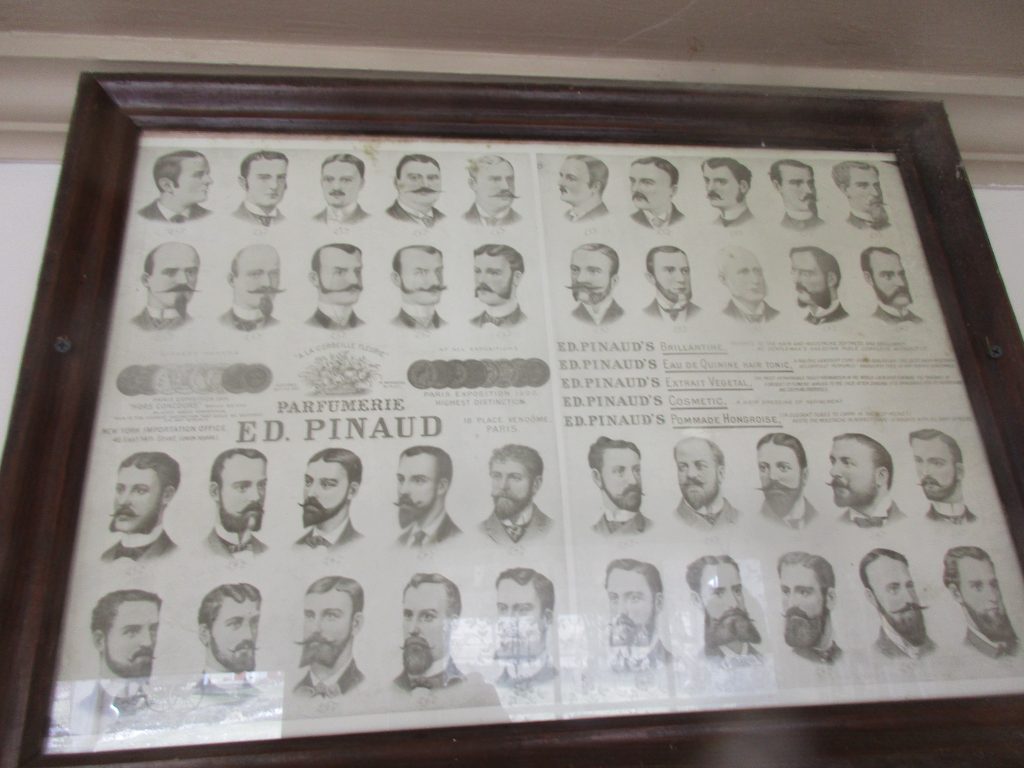
This late 1800s framed print in the Barber Shop demonstrates that facial hair was almost universal on men.


